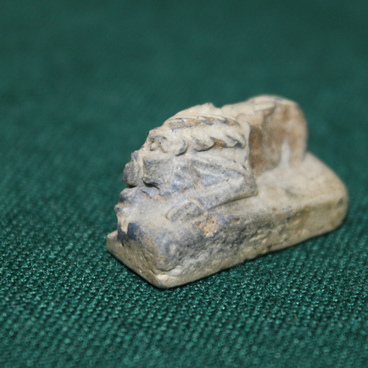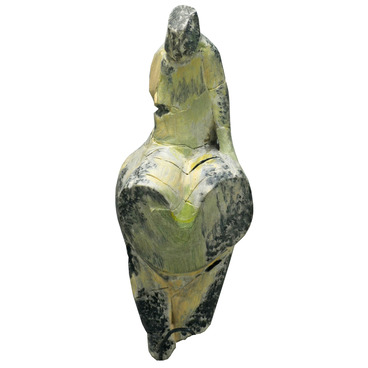This silver coin pendant with two holes was found in a burial mound near Kvetun village, Bryansk Region. It was the area of Russia’s second largest Slavic necropolis containing over 260 graves.
Byzantine Coin Pendant
Creation period
10th century
Dimensions
Diameter 1.8 centimetres, weight 2.7 grams
Technique
Silver, casting, forging
Collection
Exhibition
0
Open in app#1
Byzantine Coin Pendant
#2
#4
After World War II, Kvetun burial mounds were explored by archaeologists from the city of Trubchevsk. They were headed by Vasily Padin, director of Trubchevsk Museum of Local History. The excavations of 145 burial mounds yielded artefacts dating back to the 10th – 13th centuries.
#5
Women’s graves were particularly rich: Radimichian and Severian temple rings, finger rings, bracelets, brooches, beads made of glass and precious stones were found there. Men were buried more modestly: archaeologists found mainly metal belt buckles decorated with plates, weapons and tools.
The silver Byzantine miliaresion was found in the grave of a middle-aged woman buried according to the Christian rite. Her neck was adorned with a necklace made of small multi-colour beads and larger gilded glass beads. The coin was attached to it as a pendant with two bronze rings.
#3
Byzantine Coin Pendant (front side)
#6
Byzantine money was available in Russia in the 9th – 12th centuries, but it was rarely used for payments. In most cases, gold, silver and copper coins were made into pendants for jewelry. They were also worn instead of cross pendants worn next to the skin, as such coins were minted with Christian symbols on the obverse (front side).
#7
The miliaresion found at Kvetun burial ground was made during the times of Constantine VII Porphyrogenitus. The emperor held the Byzantine throne twice — from 913 to 920 and from 945 to 959. At the time of his first coronation, Constantine was only 8 years old, and Patriarch Nicholas Mystikos acted as regent for him. In 920, the emperor’s father-in-law, Byzantine naval commander Romanus I Lakapinus, seized the power. Formally, he was declared co-ruler with Constantine. It was not until 25 years later that Porphyrogenetus ascended to the throne again.
#9
The silver coin from Kvetun burial ground shows almost no signs of wear. It helped the archaeologists to determine that the coin’s owner was buried no later than the last third of the 10th century.
#8
The chased inscription on the other side
#10
The obverse of the miliaresion featured a trefoil Christian cross.
#13
Portrait of Constantine VII Porphyrogenitus. Bone, carving, 945 A.D. Source: wikimedia.org
The chased inscription on the other side – the reverse – read ‘Constantine Porphyrogenitus and Caesar Romanus, in Christ, faithful basileuses of the Romans.’ The word ‘basileus’ meant ‘royal’, the title used by Byzantine emperors. Byzantines referred to themselves as ‘Romans’.
#11
The inscription on the coin had a small cross in front of it used according to the Christian tradition to indicate blessings conferred upon those mentioned in the inscription.
#14
State budgetary cultural institution Bryansk State Regional Ethnography Museum
read morehide
00:00
00:00
1x
Byzantine Coin Pendant
Creation period
10th century
Dimensions
Diameter 1.8 centimetres, weight 2.7 grams
Technique
Silver, casting, forging
Collection
Exhibition
0
Open in app
Share





